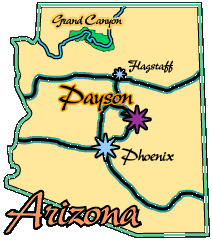
|
Architectural Drafting & Design Payson, Arizona - 928-595-1291 |

|
An Introduction to Payson
Community Profile
Community Profile 2
Lifestyle and Culture
Town of Payson Website
Chamber of Commerce Website
Photos of Payson, Arizona
Campgrounds
Campgrounds: Table & Phone Nos.
Best Fishing Areas Around Payson
Bowling Leagues in Payson
Recreation Opportunities
Payson's Calendar Of Events
Payson's Clubs & Organizations
Restaurant Directory
Places to Eat
Mazatzal Casino
Places To Stay
Places To Stay 2
Payson Airport
Payson Airport 2

ADOT Road Conditions
Important Payson Phone Numbers
Rim Country Business Roster
Local Contact Addresses
Payson Area Business E-mail Addresses
Payson Area Individuals E-mail Addresses
Payson Area Community Assistance Phone Nos.
Local, State and National Government Information
Payson Area Communities Populations and Altitudes
Geographic Location/Recreation/Transportation
World's Oldest Continuous Rodeo
Payson Area AA Schedule
Schools In Payson
Payson Economy and Infrastructure
Payson Regional Economic Development
Real Estate Services
Payson Area Builders
Payson Region Building Construction
The Payson Roundup Newspaper archive
The Payson Roundup - Newspaper
Rim Country Gazette - Newspaper
MyPayson.com
Payson and Rim Country Weather
Residential Construction Terminology Flashcards
Town of Payson - Community Development Dept.
Gila County Parcel and Tax Information Search
Gila County Assessor - Plats, Parcels, etc.
International Residential Code online
AITC Glu-Lam Beam Capacity Tables
Flagstaff Ranch Design Standards
Star Valley Building Department
Reference Materials
Bookmarks Menu

Home ||
Local Builder ||
Architectural Glossary ||
Images ||
Payson, AZ ||
Places to Stay
